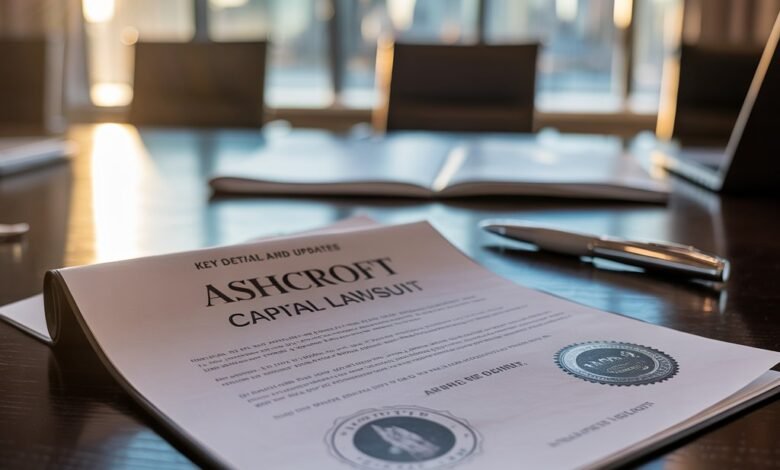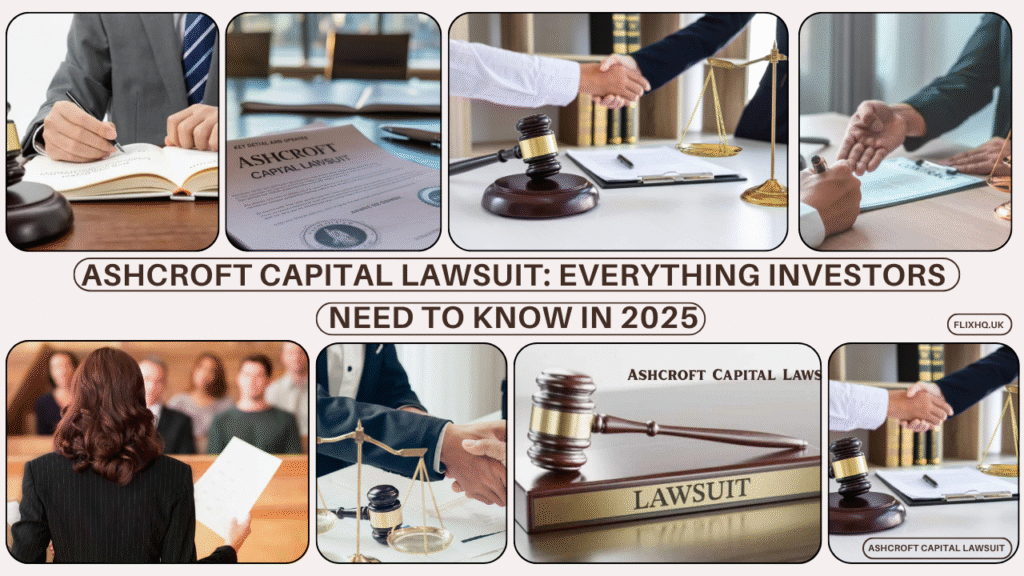The ashcroft capital lawsuit is one of the most talked-about legal battles in 2025. Investors claim that ashcroft capital misled them with unrealistic projections, failed to disclose critical risks, and charged high fees while their investments underperformed. This case has already drawn attention across the real estate industry.
Many experts say the ashcroft capital lawsuit could change how real estate syndications operate. It has also reminded investors of other cases like the lear capital lawsuit and the possible spring oaks capital lawsuit, showing why transparency and accountability matter.
For anyone interested in real estate or finance, the ashcroft capital lawsuit is a warning. It is not just about one company. It is about how investors can protect their money and demand honesty from those who manage it.
What Is the Ashcroft Capital Lawsuit?

The ashcroft capital lawsuit is a major legal case in 2025. A group of investors claim that ashcroft capital misled them with false projections and failed to share critical risks. They say they lost over $18 million because of these actions. This lawsuit is now a big topic in the real estate investment world.
Investors argue that ashcroft capital promised higher returns than what was realistic. They also claim the company did not give clear updates when the properties underperformed. Many believe this violates fiduciary duty and securities laws. Because of this, the ashcroft capital lawsuit is being closely watched by the industry.
This lawsuit is similar to the lear capital lawsuit, where investors also accused a company of hiding fees and giving misleading information. That case led to a settlement and tighter oversight. Now, the ashcroft capital lawsuit could create the same kind of changes for real estate syndications.
Why Investors Filed the Lawsuit

The ashcroft capital lawsuit lists several key reasons why investors decided to sue. Many of these claims involve lack of transparency and unfair practices. Here are the main allegations:
- Misrepresentation of returns: Investors say projected IRR and cash-on-cash returns were too high.
- Hidden risks: Important market factors were not disclosed.
- Late updates: Investor communication was slow or missing.
- Excessive fees: Fees were charged even when deals performed poorly.
- Breach of fiduciary duty: Investors claim Ashcroft put its profits first.
Each of these points forms the core of the ashcroft capital lawsuit. If proven in court, they could lead to major financial penalties and strict new rules for similar companies.
These claims are not unique to this case. In the lear capital lawsuit, regulators found that misleading financial practices harmed many investors. The ashcroft capital lawsuit may become the next big example of how legal action can change the way investment firms work.
Ashcroft Capital’s Response

In the ashcroft capital lawsuit, the company has denied every allegation. They argue that they fully disclosed all risks in their private placement memoranda. They also say that investors signed legal agreements acknowledging these risks before investing.
Ashcroft claims the poor results are due to market conditions. They argue that rising interest rates and economic shifts affected their real estate deals. In their view, this is not a case of fraud or misconduct. Instead, they say it is simply how the market changed.
Despite these defenses, the ashcroft capital lawsuit continues. Many investors feel they were misled and are pushing for a full trial. Legal experts say that if the court sides with investors, the outcome could reshape real estate syndication rules across the country.
Comparison With Other Lawsuits

The ashcroft capital lawsuit is not the only case of its kind. Other lawsuits have raised similar concerns.
The lear capital lawsuit involved misleading fees and deceptive sales practices. That case ended in a settlement of millions of dollars. It forced the company to improve disclosures and repay investors.
There is also discussion of a possible spring oaks capital lawsuit. While it has not been filed yet, some investors claim they faced similar issues there. If that case moves forward, it may join the ashcroft capital lawsuit as another example of growing legal action against investment firms.
Impact of the Ashcroft Capital Lawsuit on Investors

The ashcroft capital lawsuit is already changing how investors view real estate deals. Many are now more cautious before committing their money. They are demanding better reporting and clearer documentation from sponsors.
Some investors are also hiring lawyers to review offering documents before investing. This step helps them spot potential risks early. The ashcroft capital lawsuit shows why this extra level of due diligence is important.
If the lawsuit ends with a win for investors, it could lead to new industry-wide rules. These rules might require more transparency, regular third-party audits, and stronger legal protections for passive investors.
How Investors Can Protect Themselves

The ashcroft capital lawsuit has taught investors several lessons. Here are practical steps to stay safe:
- Read all legal documents carefully before investing.
- Research the sponsor’s track record and reputation.
- Ask questions about risks and fees.
- Compare actual results with original projections.
- Join investor groups to share experiences and updates.
By following these steps, investors can avoid problems similar to those seen in the ashcroft capital lawsuit, lear capital lawsuit, or even a possible spring oaks capital lawsuit.
FAQs
Q1: What is the ashcroft capital lawsuit about?
It involves investor claims of misleading returns, hidden risks, and poor communication by Ashcroft Capital.
Q2: How much is involved in the ashcroft capital lawsuit?
Investors are seeking over $18 million in damages.
Q3: Is the ashcroft capital lawsuit related to the lear capital lawsuit?
Both cases involve investor protection and transparency issues. However, they are separate legal actions.
Q4: What is the spring oaks capital lawsuit?
It is not an official case yet but may involve similar investor complaints about poor disclosures and financial practices.
Q5: How can investors avoid similar problems?
Do detailed research, review legal agreements, and demand clear updates before investing.
Conclusion
The ashcroft capital lawsuit is more than just one legal case. It is a warning for the entire investment industry. If investors win, this lawsuit could set new standards for how sponsors report risks, fees, and returns. It is also a reminder of the lessons from the lear capital lawsuit and the potential spring oaks capital lawsuit. For anyone investing in real estate, the message is clear: always verify, always ask questions, and never rely only on promises.


